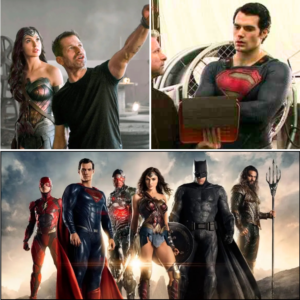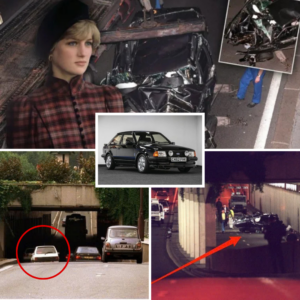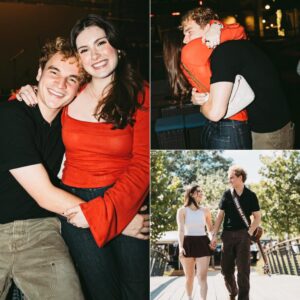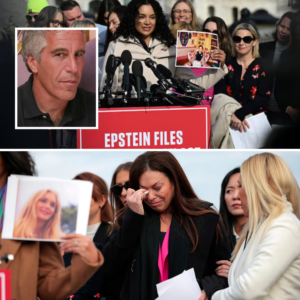Long before Henry Cavill became the chiseled face of Superman in Man of Steel or the brooding Geralt of Rivia in The Witcher, he took a detour into one of the most unexpected projects of his career: the 2006 musical Red Riding Hood. This straight-to-DVD film, directed by Randal Kleiser, known for hits like Grease and The Blue Lagoon, reimagines the classic fairy tale with a modern, campy twist, complete with musical numbers and a werewolf in place of the traditional wolf. Released on June 27, 2006, the film stars a 23-year-old Cavill as the Hunter, alongside Morgan Thompson as Red, Joey Fatone as the Wolf, and Lainie Kazan as Grandma. Widely panned by critics, with a 0% Tomatometer score on Rotten Tomatoes and a 3.6/10 rating on IMDb, the film has nevertheless found a niche cult following, largely due to its “so bad it’s good” appeal and Cavill’s early-career charisma. This article offers an in-depth exploration of Red Riding Hood, analyzing its plot, production, critical reception, Cavill’s performance, and its unique place in his journey to stardom.
The Context of Cavill’s Early Career
In 2006, Henry Cavill was still a rising actor, years away from the global fame that would come with The Tudors (2007), Immortals (2011), and Man of Steel (2013). At 23, he had already appeared in supporting roles in films like The Count of Monte Cristo (2002) and I Capture the Castle (2003), showcasing his potential in period dramas. His casting as the Hunter in Red Riding Hood came during a transitional phase, as he moved from minor parts to more prominent roles. The film’s lighthearted, musical format offered Cavill a chance to explore a different facet of his acting, contrasting sharply with the intense, dramatic roles he was accustomed to. While Red Riding Hood didn’t catapult him to fame, it remains a fascinating artifact, revealing a young Cavill’s ability to shine even in unconventional material.
Production Background
Red Riding Hood is an 82-minute American fantasy musical produced under 20th Century Fox’s Key Home Video label, a division often reserved for projects the studio didn’t fully back for theatrical release. Distributed by 7 Arts International and Cecchi Gori, the film was released on June 27, 2006, though some sources, including IMDb, list 2004 due to discrepancies in copyright dates (2005 and 2006 appear on the DVD packaging). Directed by Randal Kleiser, with a screenplay by Timothy Dolan, the film features a diverse cast, including Morgan Thompson, Joey Fatone (of NSYNC fame), Lainie Kazan, Daniel Roebuck, Debi Mazar, and a young Ben Platt in his film debut, long before his Pitch Perfect and Dear Evan Hansen fame. The production team included producers Steve Austin, Jonathan Bogner, David Borg, Nzinga Garvey, Lou Pearlman, Greg McDonald, Stuart E. Rawitt, and Jack Serino, with cinematography by David Stump and music composed by Bruce Roberts and David Tobocman.
The film’s low-budget nature is evident in its simplistic sets, uneven special effects, and basic musical compositions. Intended as a family-friendly comedy with a touch of parody, Red Riding Hood struggles to balance its whimsical tone with moments of crude humor and fantastical violence, resulting in a disjointed viewing experience. Despite these flaws, the film’s quirky charm and Cavill’s involvement have kept it alive in discussions among fans and cinephiles.
Plot Breakdown
The narrative of Red Riding Hood employs a modern framing device: Claire, a teenage girl obsessed with boy bands, is babysat by her grandmother (Lainie Kazan). Desperate to sneak out to a concert, Claire agrees to listen to a retelling of Little Red Riding Hood on the condition that she and her brother Matt (Sam Oz Stone) can modify the story, such as replacing the wolf with a werewolf. The fairy tale then unfolds, set in a whimsical world where Red (Morgan Thompson) lives with her family in a lighthouse by the ocean. Tasked with delivering soup to her grandmother’s cliffside home, Red ignores her mother’s warnings about the dangers of the woods and takes a shortcut, where she encounters the Big Bad Wolf (Joey Fatone), a werewolf disguised as a man, and the Hunter (Henry Cavill).
The Hunter rescues Red from the Wolf’s initial attack, revealing his tragic backstory: the Wolf devoured his parents, leaving him to wander alone. Despite his warnings, Red continues her journey, only for the Wolf to later consume her grandmother, her father, and even the Hunter. In a fantastical climax, Red defeats the Wolf by feeding him a silver bullet, causing him to explode and release those he swallowed, miraculously alive. The curse is lifted, and the story returns to the present, where Claire, inspired by the tale’s lesson, chooses to stay home. A humorous coda introduces a pizza delivery boy resembling the Hunter, hinting at his narrative survival.
The plot’s structure is intentionally playful, blending modern humor with fairy-tale elements. However, its reliance on simplistic musical numbers and abrupt tonal shifts—between comedy, violence, and moral lessons—contributes to its critical failure.
Henry Cavill’s Performance as the Hunter
At 23, Cavill brought a youthful, earnest charm to the role of the Hunter, a character who serves as both a protector and a tragic figure. Introduced early in the fairy-tale segment, the Hunter saves Red from the Wolf’s first attack and shares his somber backstory, adding depth to an otherwise lighthearted narrative. His interactions with Red are marked by chivalry and sincerity, qualities that foreshadow the commanding presence he would later bring to roles like Superman and Geralt. Cavill’s long hair, a stylistic choice also seen in his contemporaneous roles in Tristan + Isolde (2006) and Stardust (2007), enhances his fairy-tale aesthetic, making him a visual standout in the film’s low-budget production.
Despite the script’s limitations—sparse dialogue and a simplistic arc—Cavill’s performance is often cited as a highlight. Fans on IMDb praise his “charming” and “delicious” presence, with one reviewer noting, “The best reason to watch this Red Riding Hood version is the Hunter played by Henry Cavill. He is so charming here, and what a beautiful man” (IMDb). Another commented, “The chivalrous exploits of Henry Cavill apply a temper-pin to the dramatic, bringing forth magnificence,” suggesting his sincerity elevates the film’s campy tone. While the role doesn’t showcase his full range, it demonstrates his ability to inject gravitas into subpar material, a skill that would serve him well in his later career.
Critical and Audience Reception
Red Riding Hood was met with near-universal disapproval from critics, earning a rare 0% Tomatometer score on Rotten Tomatoes based on 47 reviews, indicating no positive critical feedback (Rotten Tomatoes). On IMDb, it holds a 3.6/10 rating from 33 user reviews, reflecting a polarized audience response. Critics lambasted the film’s low production values, simplistic musical numbers, and inconsistent tone, with one IMDb user critiquing, “The songs were the most literal I’ve ever heard in a musical—‘don’t take the short cut, honey, there’s a wolf in the woods’” (IMDb). Others found fault with its crude humor, such as spitting scenes, which clashed with its PG rating and family-friendly intentions.
However, the film has cultivated a small but dedicated cult following, particularly among Cavill fans and lovers of “so bad it’s good” cinema. On Amazon, some reviewers called it “delightfully corny” and a “magical piece of horribleness,” appreciating its unpretentious charm (Amazon). The musical numbers, including “I Want Her Now” (sung by the Wolf) and “Spirit – Freedom” (sung by Red and Grandma), are noted for their catchy, if simplistic, quality (CBR). Cavill’s performance consistently emerges as a redeeming factor, with his charisma shining through despite the film’s flaws.
Cavill’s Reflections on the Film
In a 2015 interview with E!Online, conducted when he was 20 during the filming of Red Riding Hood in 2003, Cavill described the project as a “nice, light-hearted, relaxed, fun movie” (YouTube). He contrasted it with his earlier period roles, which involved “lots of crying, lots of death, lots of agony,” noting that the musical’s playful tone was a welcome change. Cavill also praised co-star Joey Fatone, highlighting the collaborative and enjoyable atmosphere on set. His comments reflect a genuine enthusiasm for the project, suggesting he embraced the opportunity to explore a comedic, lighthearted role at a formative stage in his career.
Strengths and Weaknesses of Red Riding Hood
Strengths
Cavill’s Charisma: Cavill’s earnest portrayal of the Hunter is the film’s strongest asset, bringing sincerity and charm to a role that could easily have been lost in the campy narrative.
Cult Appeal: The film’s over-the-top style and low-budget charm resonate with fans of “so bad it’s good” cinema, making it a quirky addition to Cavill’s filmography.
Creative Twist: The werewolf element and modern framing device offer a fresh, if flawed, take on the classic fairy tale, appealing to viewers who enjoy unconventional adaptations.
Weaknesses
Low Production Values: Budget constraints are evident in the film’s simplistic sets, lackluster special effects, and uninspired cinematography, which undermine its visual appeal.
Musical Shortcomings: The songs, while occasionally catchy, are criticized for their overly literal lyrics and basic compositions, failing to enhance the storytelling.
Tonal Inconsistency: The film struggles to balance family-friendly humor, crude gags, and fantastical violence, resulting in a disjointed experience that confuses its target audience.
The Film’s Place in Cavill’s Career
Red Riding Hood arrived at a critical juncture in Cavill’s career, as he transitioned from supporting roles to more prominent parts. Following this film, he appeared in Tristan + Isolde (2006) and Stardust (2007), before achieving widespread recognition as Charles Brandon in The Tudors (2007). While Red Riding Hood didn’t significantly advance his career, it showcases his willingness to take on diverse roles and his ability to make the most of limited material. The film’s obscurity stands in stark contrast to his later blockbuster roles, making it a compelling curiosity for fans eager to trace his evolution from a young actor to a global star.
Cultural and Historical Context
Released in the mid-2000s, Red Riding Hood reflects a trend of reimagining classic fairy tales with modern spins, as seen in films like Hoodwinked! (2005) and Shrek (2001). Its straight-to-DVD release aligns with the era’s proliferation of low-budget family films, often featuring recognizable names to boost marketability. The inclusion of Joey Fatone, a pop culture figure from NSYNC, and a pre-fame Ben Platt adds to the film’s quirky appeal, while Cavill’s involvement underscores the unpredictable nature of early-career roles for rising stars. The film’s campy tone and musical format also echo the era’s fascination with genre-blending experiments, even if Red Riding Hood failed to capture mainstream success.
Why It Matters Today
For Henry Cavill fans, Red Riding Hood is a hidden gem, offering a rare glimpse of the actor before he became a household name. The film’s flaws—its low budget, simplistic music, and uneven execution—only enhance its charm as a “so bad it’s good” cult classic. Cavill’s performance, though constrained by the script, hints at the star power that would later define his career, making the film a fascinating footnote in his journey. Beyond its entertainment value, Red Riding Hood serves as a reminder of the risks actors take early in their careers, embracing projects that, while imperfect, contribute to their growth and versatility.
Conclusion
Red Riding Hood (2006) may not be Henry Cavill’s finest hour, but it’s an undeniably intriguing chapter in his career. As the Hunter, Cavill brings a surprising level of charisma and sincerity to a film that struggles with its low-budget production and tonal inconsistencies. Panned by critics yet cherished by a small group of fans for its campy charm, the film occupies a unique space in the “so bad it’s good” canon. Cavill’s own enthusiasm for the project, as expressed in his 2015 reflections, underscores his willingness to embrace diverse roles, even in less-than-stellar material. For fans and cinephiles, Red Riding Hood is a delightful curiosity—a chance to see a future superstar in a cringeworthy, yet oddly captivating, musical misadventure.




